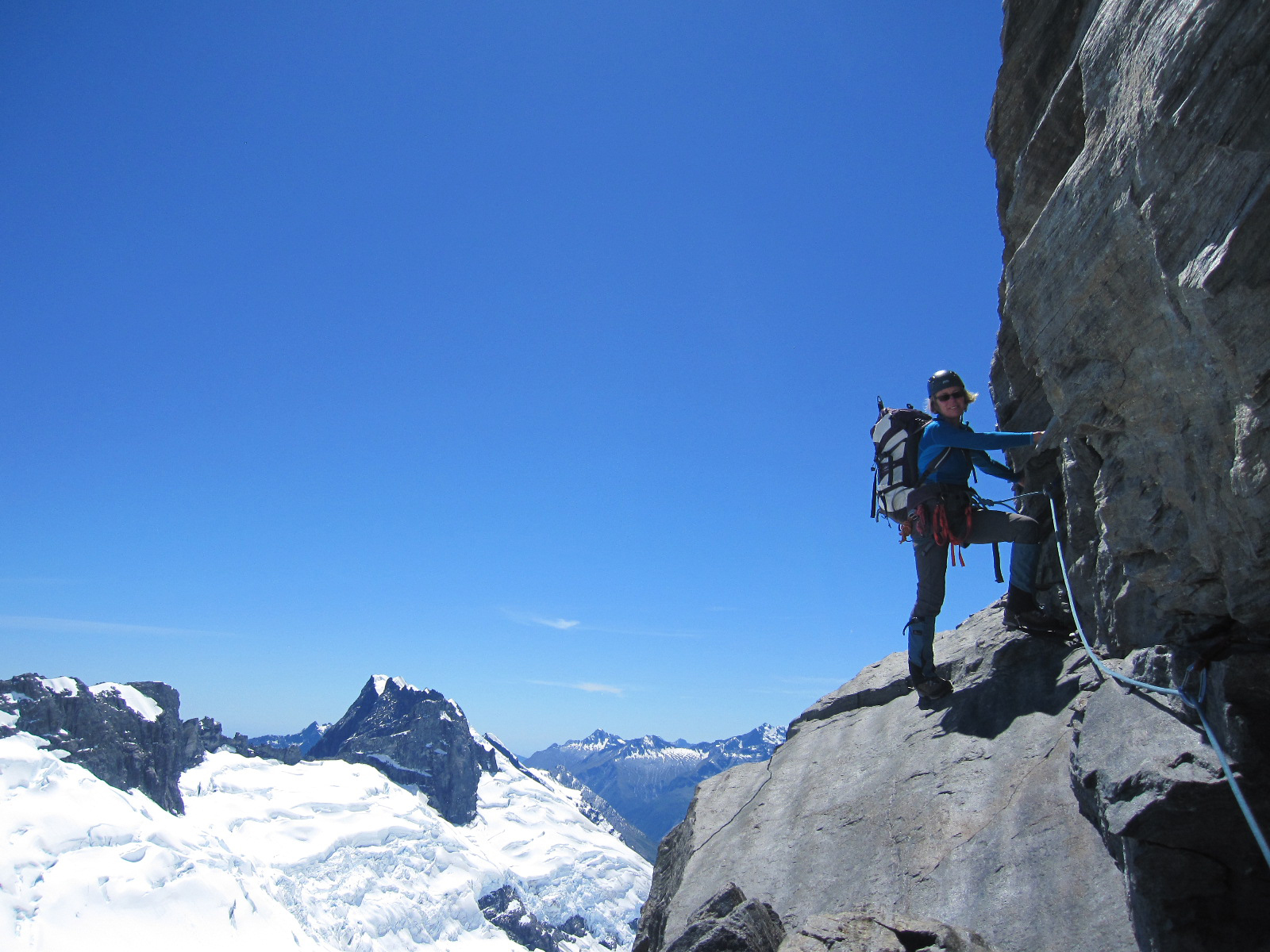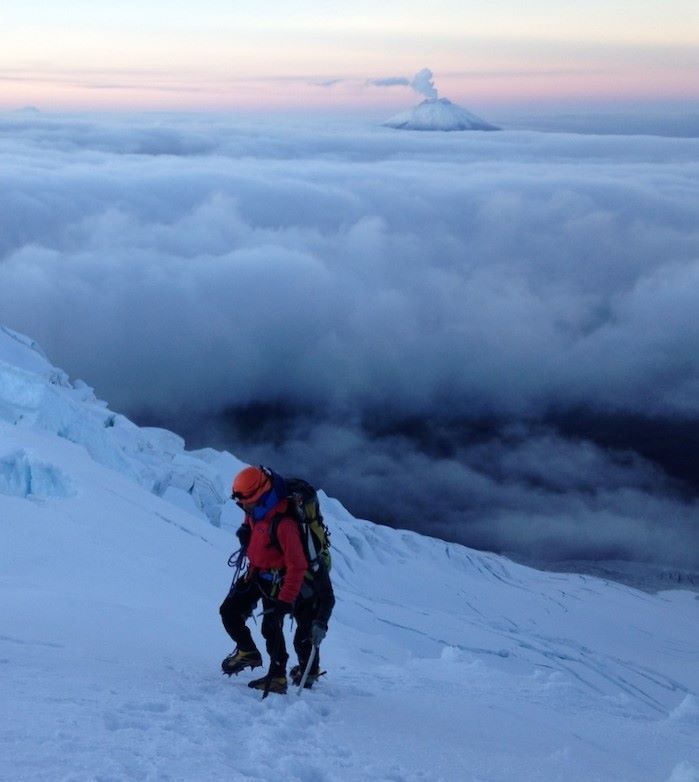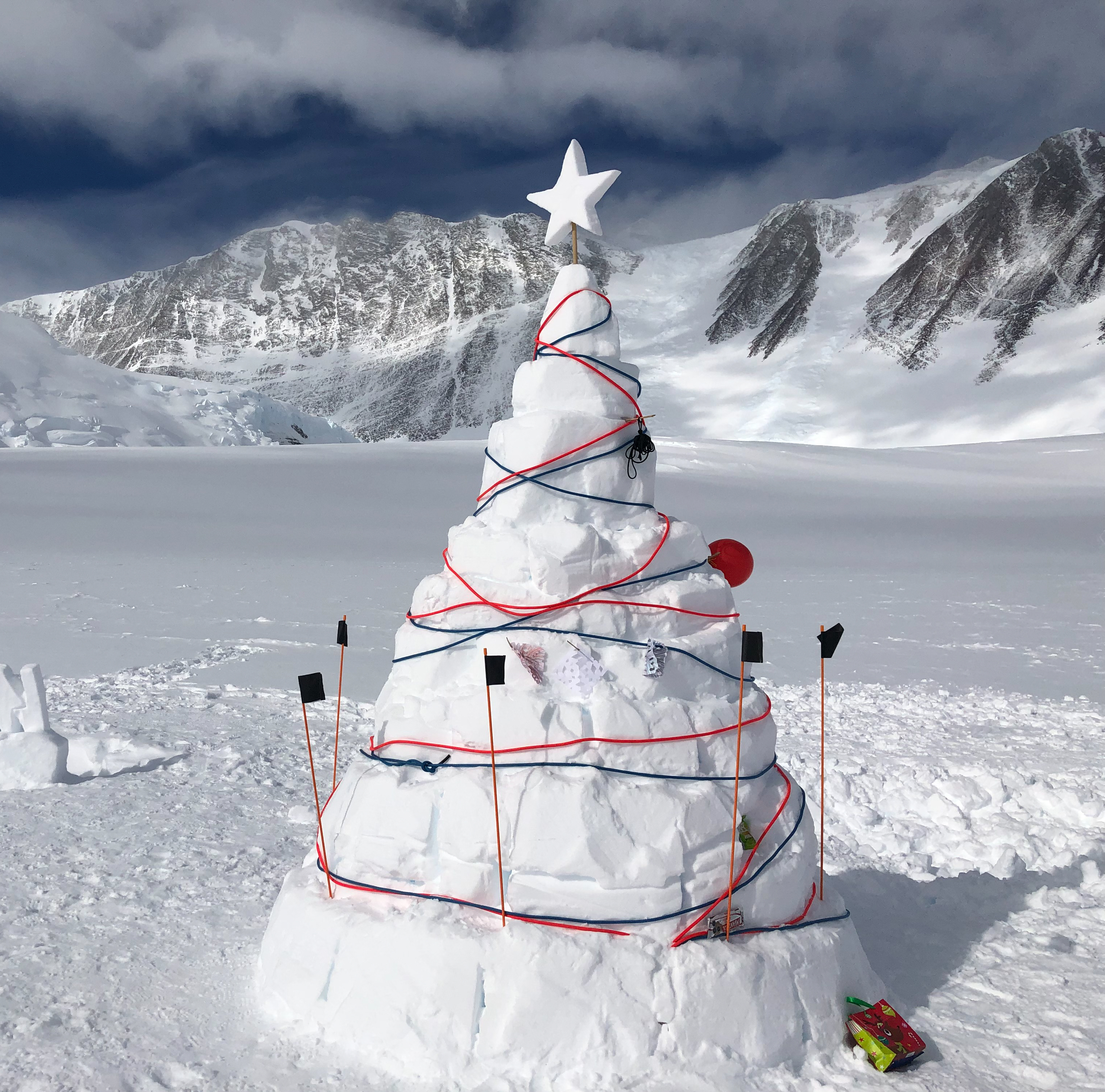A high level of aerobic fitness is required to climb Mount Aspiring. Climbers attempting the North West Ridge route should be able to carry an 8kg backpack 1,000 vertical metres in 3 hours. Climbers attempting the South West Ridge route should be able to carry an 8kg backpack 1,000 vertical metres in 2.5 hours.
Mount Aspiring (3,033 metres) is 180 km southwest of Aoraki Mount Cook, in Mount Aspiring National Park. It is the highest peak in the region, rising 2,500 meters from the Matukituki Valley floor.
Known in te reo Māori as Tititea, the "glistening one", Mt Aspiring is often called the "Matterhorn of the Southern Alps", and when viewed from the west looks particularly impressive. It is a "classic" horned peak, standing high above the others in the region.
Our 5-day Mt Aspiring guided mountaineering expedition can be attempted by climbers with some climbing experience, via the North West Ridge (normal route). The classic South West Ridge offers a challenge for the more experienced alpinist.
Climbing Ability
Climbing Ability
Intermediate
Elevation
Elevation
3,033m/9,951ft
Duration
Duration
5 days
Location
Location
Wānaka, NZ
Meet your guide in Wānaka, check gear, drive to the road end and fly into the mountains in the early afternoon. A 2-hour walk across the Bonar Glacier takes us to Colin Todd Hut (1,780m/5,840ft). Alternatively we may opt to camp in tents on Bevan Col (1,850m/6,070ft).
Acclimatisation day, ascend a smaller peak such as Mount Bevan (2,030m/6,660ft) and undertake some familiarisation skills with your guide.
Summit day (3,033m/9,951ft), start 3am, and finish as late as 7pm - OR contingency day.
Commence the 2-day walk out to the road-end, either via French Ridge or Bevan Col, depending on conditions OR contingency day.
Complete walk out to road end, (or optional flight out at extra cost) to vehicle at the road end.
The walk in and out from Mount Aspiring (particularly the Bevan Col route) is a long, challenging trek that many people find as challenging as the climb of Mount Aspiring. Climbers need to be fit and capable of carrying a fully loaded pack through steep, untracked terrain for 8–10 hours after a long summit day.

Departures and Pricing
| Start/End | Departing from | Quantity | Pricing | Notes | Book |
|---|---|---|---|---|---|
| Nov - Apr 2026 | Wānaka, New Zealand | 5-day Heli in | $7,550 NZD $ | ||
| 1 Nov - 30 Apr 2026 | Wanaka, New Zealand | 7-day Walk-in | $8,795 NZD $ | ||
Need some training before attempting Aspiring? Consider the Aspiring Skills & Summit
PREPARE
North West Ridge Route 1:1 Climber to Guide Ratio
For the Northwest Ridge Route, we can guide participants with alpine climbing skills - approximately at the level of our Alpine Skills Course (ASC) and a high level of fitness.
Prerequisites:
- At least 5 days of crampon experience, including 30º to 35º snow/ice
- Competence on rock - seconding to AU 14 or US 5.7
- Confidence scrambling with exposure
- Ascents of 2 or 3 peaks involving some exposure (NZ Alpine 1+ to 2+).
South West Ridge Route 1:1 Climber to Guide Ratio
On South West Ridge we will guide experienced climbers, those who have climbing experience similar to our Technical Mountaineering Course (TMC), in addition to other alpine climbing.
Prerequisites:
- At least 10 days on crampons within the past 2 years
- Experience climbing with 2 tools on 45º to 50º snow and ice
- Experience of several 16-20 hour days on alpine ascents (NZ Alpine 1+ to 3)
- Competence on rock - seconding to Australian 16, or US 5.8.
Mountaineering on Mount Aspiring in the summer months has a relatively low objective hazard. The guide’s primary concern will always be safety. Decisions on route feasibility and conditions will always be based on this.

The Adventure Consultants story evolved from the Southern Alps of New Zealand where large glaciated mountains forged our passion for high places. It is a legacy that still exists today through guided ascents and instruction programs. We work with the best guides in the country to bring you high-quality programs that introduce you to the best the country has to offer and we regularly partner with Alpine Guides (Aoraki) to provide professional guiding under the IFMGA qualification program.

The price of your trip includes the following:
- Professional NZMGA/IFMGA mountain guide on a 1:1 basis
- Cost of helicopter access to Bevan Col
- All meals including snacks and energy bars
- Hut fees, and Wanaka accommodation as required (inside trip dates)
- Technical equipment
- Technical manual.
Just how fit is 'fit enough'? Mountaineering is a demanding activity. The fitter you are the more you will enjoy your time with us. Unless you regularly climb, bushwalk/hike, and are used to long days carrying a pack, you will need to train for mountaineering.
Mountaineering is primarily an aerobic activity. Strength is important for lifting a pack, but it is more important to build up your aerobic fitness level and stamina for long climbing days. Aerobic fitness can only be improved over months - so start your training program now.
As you come close to the time for your climbing trip try to use a few weekends to load up with a 7-10 kg pack and walk all day (8 hours), up hills, if possible, to work on endurance.
Don’t underestimate how rigorous mountaineering can be. It is better to be over-prepared.
See our Fitness Training page for training tips and programs.
The summer climbing period extends from November to early-April. You must be prepared for a wide range of conditions, from very warm, to cold snowy days. As the summer season advances access on to climbing routes will change.
Summer Temperatures and Daylight Hours
- Actual air temperatures may be 8°C, but can feel like 28°C due to reflected radiation.
- Coolest period: November to mid-December, and March-April. Range -10°C to +10°C
- Warmest period: January and February. Range -5°C to +15°C
- Daylight hours: 05:00 to 21:00, with shorter days later in the season.
Changing Snow Conditions
During November and December access on to routes is usually easier, due to fewer crevasses. Expect fresh snow during storms. Your guide will place greater emphasis on avalanche awareness. Avalanche transceivers are normally carried.
The snowpack is deeper and "wetter". Conditions can be soft underfoot early in the season, especially in the afternoon.
From January onwards the snowpack will consolidate (shallower foot penetration). Crevasses are larger. Crevasse bridging is weakest. Less chance of snowfall. Rock fall hazard increases.
Late Season - March onwards: Conditions are typically "hard" underfoot. Crevassing is at its greatest extent. Night temperatures are dropping. Greater chance of snowfall.
For international visitors, Christchurch or Queenstown are the main entry points to the South Island, with the most public transport options. Christchurch has more direct flights.
Air New Zealand offers daily domestic flights to Queenstown. International visitors can fly directly to Queenstown.
Ritchies Wānaka pick up and drop off at Queenstown Airport.
In the remote mountains of New Zealand, there are no cable cars or roads to high elevations to provide easy access to the mountains. Walking into many mountain venues can use up to 2 days of your trip, across very rugged terrain.
To make the best use of your time many of our trips use aircraft access. When you arrive the scale, and nature of the terrain, will make the logic for flying obvious.
Flying out is not included in the cost of the Mount Aspiring Ascent.
Walking out from your mountain venue is possible, but flying out is by far the more popular choice. Walking out may be beyond your fitness, especially at the end of a long trip. Conditions and weather may dictate that a flight out is the safer choice. Your guide will discuss these options with you.
Once you have made your booking we strongly advise buying travel insurance, to cover you for unexpected cancellations, or other misadventures on your travels.
Travel insurance cancellation policies will protect you from losing the deposit for your trip if you have to cancel unexpectedly.
Insurance specifically for mountaineering activities is optional. New Zealand's Accident Compensation Corporation (ACC) system extends to all visitors to New Zealand and includes cover in the event of an accident.
Any travel agent, or insurance broker (even your credit card provider) can assist with standard insurance, including insurance for trip cancellation.
The New Zealand Alpine Club can provide insurance coverage for their New Zealand and Australian members visiting NZ.










